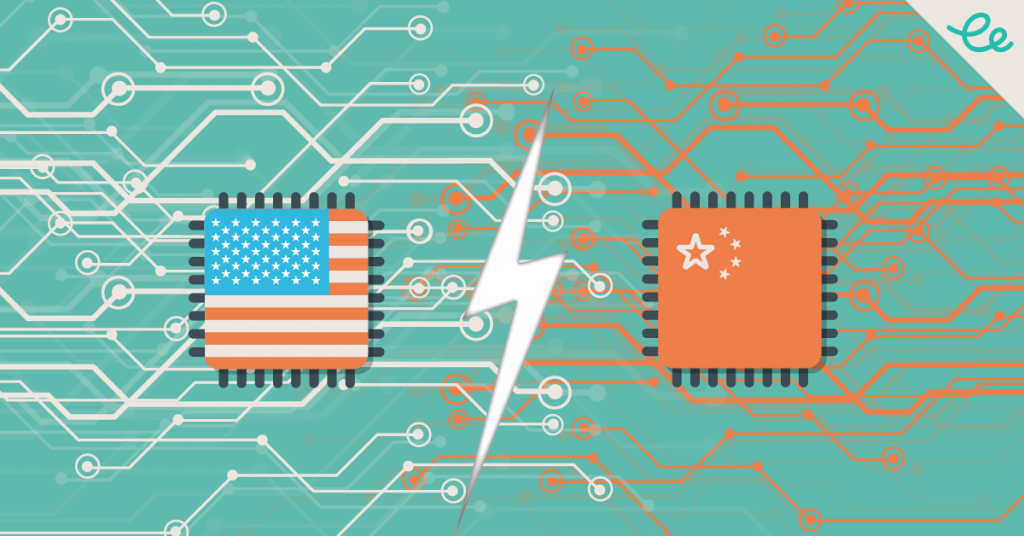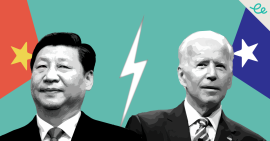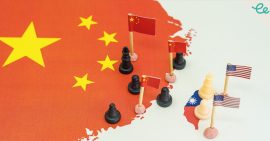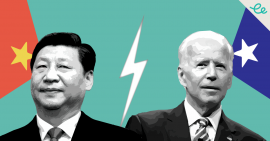Landmarks from the troubled history of US China relations include Shanghai, the setting for a famous Communique during US President Richard Nixon’s breakthrough 1972 visit. More modest hopes accompanied the late July visit to the east China port by Donald Trump’s negotiators. This article is a summary of major US China news in July 2019.
They tackled familiar ground: intellectual property, forced technology transfer, non-tariff barriers, agriculture, services, the trade deficit, and enforcement. At the same time, China is pushing hard to conclude the world’s largest regional trade agreement – the RCEP, which doesn’t include the USA. China even has the chance to turn “a crisis into an opportunity”, said the Politburo.
In a goodwill gesture, Beijing gave the go-ahead for five companies to buy up to 3 million tonnes of US soybeans free of retaliatory import tariffs, reported Bloomberg, with more waivers possible depending on the talks.
China is stealing “its way up the ladder”, said the FBI Director Christopher Wray. “If China is fighting a war, it is a just war to defend its legitimate rights and interests,” countered Beijing. In a defence “white paper”, China sharpened a warning that it could use force to prevent Taiwan from declaring independence, and vowed to increase military cooperation with Russia.
“I used to say he was a good friend of mine,” said Trump of Xi Jinping. “We’re probably not quite as close now.” The US President also threatened new tariffs, which Beijing said could derail any deal. Slow progress on key initial demands from Trump and Xi raises doubts about whether the US and China will actually return to the negotiating table to overcome their much deeper differences, reported Bloomberg.
Despite Trump’s claims, US government figures showed revenue collected from tariffs on imported Chinese goods is not nearly enough to cover the cost of financial support to farmers and other affected sectors. China threatened to impose sanctions on US firms involved in a $2.2bn arms deal to Taiwan.
“China is letting us down in that they have not been buying the agricultural products from our great Farmers that they said they would,” Tweeted Trump as US government data showed China actually slowed its purchases of American farm products following the G20 meeting in Japan, despite DC’s understanding the trade war truce would mean the opposite.
Trump’s negotiators spoke by phone with their Chinese counterparts, but the same issues remain that snagged talks two months ago. White House adviser Larry Kudlow warned that the US and China may never reach a trade deal because of the difficulty in resolving these remaining issues.
Beijing is winning the “silent war” to dominate the South China Sea, while its broader maritime expansion into a major naval power “reflects a curious mix of ambition and paranoia”, guided in part by deep insecurity. In one potential flashpoint, the Pentagon called an anti-ship ballistic missile test in the South China Sea “disturbing” and contrary to pledges Beijing would not militarise the waterway.
The tussles have sparked conflict among the US China-watchers – while 100 experts wrote an open letter to Trump, insisting China is “no enemy”, others argue that Xi’s China proves the pro-engagement strategy is long dead.







Comments are closed.